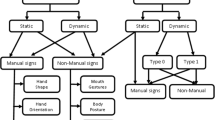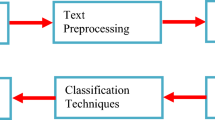Abstract
Pattern recognition is classification process that attempts to assign each input value to one of a given set of classes. The process of pattern recognition in the state of art has been achieved either by training of artificially intelligent tools or using heuristic rule based approaches. The objective of this paper is to provide a comparative study between artificially trained and heuristics rule based techniques employed for pattern recognition in the state of the art focused on script pattern recognition. It is observed that mainly there are two categories of script pattern recognition techniques. First category involves assistance of artificial intelligent learning and next, is based on heuristic-rules for cursive script pattern segmentation/recognition. Accordingly, a detailed critical study is performed that focuses on size of training/testing data and implication of artificial learning on script pattern recognition accuracy. Moreover, the techniques are described in details that are employed to identify character patterns. Finally, performances of different techniques on benchmark database are compared regarding pattern recognition accuracy, error rate, single or multiple classifiers being employed. Problems that still persist are also highlighted and possible directions are set.






Similar content being viewed by others
References
Rehman A, Kurniawan F, Dzulkifli M (2009) Neuro-heuristic approach for segmenting cursive handwritten words. Int J Inf Process 3(2):37–46
Rehman A, Dzulkifli M (2008) A simple segmentation approach for unconstrained cursive handwritten words in conjunction of neural network. Int J Image Process 2(3):29–35
Blumenstein M, Verma B (1999) Neural-based solutions for the segmentation and recognition of difficult handwritten words from a benchmark database. Bangalore, India, pp 281–284
Blumenstein M, Verma B (1999) A new segmentation algorithm for handwritten word recognition. Int Jt Conf Neural Netw (IJCNN ′99) 4:2893–2898
Bozinovic RM, Srihari SN (1989) Off-line cursive script word recognition. IEEE Trans Pattern Anal Mach Intell 11:68–83
Wang X, Chena A, Feng H (2011) Upper integral network with extreme learning mechanism. Neurocomputing 74(16):2520–2525
Saba T, Sulong G, Rahim S, Rehman A (2010) On the segmentation of multiple touched characters: a heuristics approach. Lecturer Notes in Computer Science (LNCS). Springer, Berlin, p 540
Rehman A, Kurniawan F, Dzulkifli M (2008) Off-line cursive handwriting segmentation, a heuristic rule-based approach. J Inst Math Comput Sci (Computer Science Series) Kolkata, India, vol. 19(2), pp 135–139
Shafry R, Rehman A, Faizal-Ab-Jabal M, Saba T (2011) Close spanning tree approach for error detection and correction for 2D CAD drawing. Int J Acad Res 3(4):525–535
Wang XZ, Zhai JH, Lu SX (2008) Induction of multiple fuzzy decision trees based on rough set technique. Inf Sci 178(16):3188–3202
Kurniawan F, Rehman A, Dzulkifli M (2009) Contour vs. non-contour based word segmentation from handwritten text lines. An experimental analysis. Int J Digit Content Technol Appl 3(2):127–131
Rehman A, Saba T (2011) Performance analysis of segmentation approach for cursive handwritten word recognition on benchmark database. Digit Signal Process 21:486–490
Verma B, Gader P (2000) Fusion of multiple handwritten word recognition techniques. Neural networks for signal processing. In: Proceedings of IEEE signal processing society workshop, vol 2, pp 926–934
Saba T, Sulong G, Rehman A (2011) Document image analysis: issues comparison of methods and remaining problems. Artif Intell Rev 35(2):101–118. doi:10.1007/s10462-010-9186-6
Saba T, Rehman A (2011) Off-line cursive script recognition: current advances, comparisons and remaining problems. Artif Intell Rev. doi:10.1007/s10462-011-9229-7
Saba T, Rehman A, Elarbi-Boudihir M (2011) Methods and strategies on off-line cursive touched characters segmentation: a directional review. Artif Intell Rev. doi:10.1007/s10462-011-9271-5
Rehman A, Mohammad D, Sulong G, Saba T (2009) Simple and effective techniques for core zone detection and slant correction in script recognition. In: IEEE international conference on signal and image processing applications (ICSIPA’09), pp 15–20
Rehman A, Saba T, Sulong G (2010) An intelligent approach to image denoising. J Theor Appl Inf Technol 17(1):32–36
Rehman A, Dzulkifli M, Kurniawan F (2008) Line and skew removal from off-line cursive handwritten words. Int J Res (Science) 24(2):28–33
Lecce VD, Dimauro A, Guerriero, Impedovo S, Pirlo G, Salzo A (2000) A new hybrid approach for legal amount recognition. In: Proceedings of 7th international workshop on Frontiers in handwriting recognition. Amsterdam, pp 199–208
Haron H, Rehman A, Adi DIS, Lim SP, Saba T (2012) Parameterization Method on B-Spline Curve. Math Probl Eng 2012. doi:10.1155/2012/640472
Lecolinet E, Baret O (1994) Cursive word recognition: methods and strategies. fundamentals in handwriting recognition. In: Impedovo S (ed), NATO ASI Series F, vol 124. Springer, UK
Rehman A, Saba T (2011) Document skew estimation and correction: analysis of techniques, common problems and possible solutions. Appl Artif Intell 25(9):769–787
Rehman A, Kurniawan F, Mohammad D (2009) Implicit vs. explicit based script segmentation and recognition: a performance comparison on benchmark database. Int J Open Probl Comput Sci Math 2(3):352–364
Saba T, Rehman A, Sulong G (2010) Non-linear segmentation of touched roman characters based on genetic algorithm. Int J Comput Sci Eng 2(6):2167–2172
Saba T, Rehman A, Sulong G (2010) Improved statistical features for cursive character recognition. Int J Innov Comput Inform Control 7(9):5211–5224
Wang XZ, Yeung DS, Tsang ECC (2001) A comparative study on heuristic algorithms for generating fuzzy decision trees. IEEE Trans Syst Man Cybern Part B 31(2):215–226
Saba T, Rehman A, Sulong G (2010) Cursive script segmentation with neural confidence. Int J Innov Comput Inf Control 7(8):4955–4964
Binu Chacko P, Vimal Krishnan VR, Raju G, Babu Anto P (2011) Handwritten character recognition using wavelet energy and extreme learning machine. Int J Mach Learn Cyber. doi:10.1007/s13042-011-0049-5
Castillo JJ (2011) A WordNet-based semantic approach to textual entailment and cross-lingual textual entailment. Int J Mach Learn Cyber 2(3):177–189
Biggio B, Fumera G, Roli F (2010) Multiple classifier systems for robust classifier design in adversarial environments. Int J Mach Learn Cybern 1(1–4):27–41
Yanikoglu B, Sandon PA (1998) Segmentation of off-line cursive handwriting using linear programming. Pattern Recogn 31:1825–1833
Verma B (2002) A contour character extraction approach in conjunction with a neural confidence fusion technique for the segmentation of handwriting recognition. In: Proceedings of the 9th international conference on neural information processing, vol 5, pp 2459–2463
Blumenstein M, Verma B (2001) Analysis of segmentation performance on the CEDAR benchmark database. In: Proceedings of sixth international conference on document analysis and recognition, pp 1142–1146. doi:10.1109/ICDAR.2001.953964
Cheng CK, Liu XY, Blumenstein M, Muthukkumarasamy V (2004) Enhancing neural confidence-based segmentation for cursive handwriting recognition. In: 5th international conference on simulated evolution and learning (SEAL ′04), Busan, Korea, SWA-8
Blumenstein M, Liu XY, Verma B (2004) A modified direction feature for cursive character recognition. In: Proceedings of the international joint conference on neural networks (IJCNN ′04), Budapest, Hungary (CD-ROM Proceedings)
Veloso LR, Sousa RP, De Carvalho JM (2000) Morphological cursive word segmentation. Symp Comput Graphics Image Process 3(2):337–343
Cheng CK, Blumenstein M (2005) The neural-based segmentation of cursive words using enhanced heuristics. In: Proceedings of 8th international conference on document analysis and recognition, vol 2, pp 650–654
Cheng CK, Blumenstein M (2005) Improving the segmentation of cursive handwritten words using ligature detection and neural validation. In: Proceedings of the 4th Asia Pacific international symposium on information technology (APIS 2005), Gold Coast, Australia, pp 56–59
Han K, Sethi IK (1995) Off-line cursive handwriting segmentation. In: Proceedings of third international conference on document analysis and recognition, vol. 2, pp 234–240
Nicchiotti G, Scagliola C (2000) A simple and effective cursive word segmentation method. In: Proceedings of the 7th international workshop on frontiers in handwriting recognition, September, Amsterdam, ISBN 90-76942-01-3, Nijmegen: International Unipen Foundation, pp 499–504
Verma B (2003) A contour code feature based segmentation for handwriting recognition. In: Proceedings of the seventh international conference on document analysis and recognition (ICDAR), vol 2. IEEE computer society, Washington, DC, p 1203
Haron H, Shafry R, Rehman A, Saba T (2010) Curve length estimation using vertix chain code. Int J Comp Sci Eng 2(6):2110–2113
Maragoudakis M, Kavallieratou E, Fakotakis N, Kokkinakis G (2003) An effective stochastic estimation of handwritten character segmentation bounds, ISAP 2003: competitive environment, renewable energy. Distributed Generation, Lemnos
Kurniawan F, Rahim MSM, Daman D, Rehman A, Dzulkifli M, Mariyam S (2011) Region-based touched character segmentation in handwritten words. Int J Innov Comput Inf Control 7(6):3107–3120
Haron H, Rehman A, Wulandhari LA, Saba T (2011) Improved vertex chain code algorithm for curve length estimation. J Comput Sci 7(5):736–743
Acknowledgments
This research work is partially supported by TWAS fellowship cycle (2010) and Higher Education Commission of Pakistan. The authors are sincerely thankful to Prof. Dr. Ghazali Sulong and Prof. Dr. Dzulkifli Mohammad Faculty of Computer Science and Information Systems, Universiti Teknologi Malaysia (UTM) Skudai Johor Malaysia for support, guidance and layout of this research.
Author information
Authors and Affiliations
Corresponding author
Rights and permissions
About this article
Cite this article
Saba, T., Rehman, A. Effects of artificially intelligent tools on pattern recognition. Int. J. Mach. Learn. & Cyber. 4, 155–162 (2013). https://doi.org/10.1007/s13042-012-0082-z
Received:
Accepted:
Published:
Issue Date:
DOI: https://doi.org/10.1007/s13042-012-0082-z




